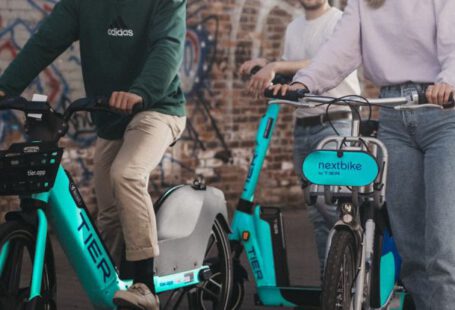Harnessing the Wind: How Can Wind Energy Be Utilized at Home?
When we think about renewable energy sources, solar panels are often the first to come to mind. However, wind energy is another powerful and sustainable option that can be harnessed right at home. Wind energy has been utilized for centuries, from traditional windmills to modern wind turbines. In recent years, advancements in technology have made it easier for homeowners to tap into the power of the wind and reduce their reliance on traditional energy sources. Let’s explore how wind energy can be effectively utilized at home.
Harnessing the Power of the Wind
The concept of wind energy is simple yet effective. Wind turbines, typically mounted on tall poles or towers, capture the kinetic energy of the wind and convert it into electricity. As the wind turns the blades of the turbine, a generator inside produces electricity that can be used to power homes and appliances. By harnessing the power of the wind, homeowners can reduce their carbon footprint and lower their energy bills.
Choosing the Right Location
One of the key factors in effectively utilizing wind energy at home is choosing the right location for a wind turbine. Ideally, the turbine should be placed in an area with consistent and strong winds. Open areas with few obstructions, such as trees or buildings, are best for maximizing wind energy production. Before investing in a wind turbine, it is important to assess the wind resources available at your location to ensure optimal performance.
Types of Wind Turbines
There are two main types of wind turbines used for residential applications: horizontal-axis turbines and vertical-axis turbines. Horizontal-axis turbines, which are the most common type, have blades that rotate around a horizontal axis like a traditional windmill. These turbines are efficient and can generate significant amounts of electricity. Vertical-axis turbines, on the other hand, have blades that rotate around a vertical axis and are often more compact and suitable for urban environments where space is limited.
Off-Grid vs. Grid-Tied Systems
When considering wind energy for your home, you have the option of choosing between off-grid and grid-tied systems. Off-grid systems are standalone systems that are not connected to the utility grid. They require battery storage to store excess electricity generated by the wind turbine for use when the wind is not blowing. Grid-tied systems, on the other hand, are connected to the utility grid and allow homeowners to sell excess electricity back to the grid. Grid-tied systems are more common and can help homeowners offset their electricity costs.
Maintenance and Efficiency
Like any renewable energy system, wind turbines require regular maintenance to ensure optimal performance. This includes inspecting the blades, checking for any signs of wear or damage, and ensuring that all components are functioning properly. Keeping the turbine well-maintained will help maximize its efficiency and lifespan. Additionally, it is important to consider factors such as the height of the turbine and the size of the blades to ensure that the system is designed to capture the maximum amount of wind energy.
Making the Switch to Wind Energy
As the demand for clean and sustainable energy sources continues to grow, wind energy is becoming an increasingly popular choice for homeowners looking to reduce their environmental impact. By harnessing the power of the wind, homeowners can not only lower their energy bills but also contribute to a greener future for generations to come. Whether you opt for a small residential wind turbine or a larger system, utilizing wind energy at home is a smart and eco-friendly choice that can make a positive impact on the planet.





